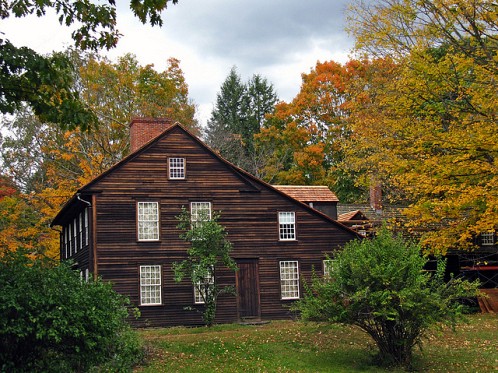7 Reasons Fall is the Right Time to Replace Your Roof
When you need a new roof installed, fall is the perfect time of year. After the summer storms and before the winter freezes, autumn offers great weather for roof installation to get your house ready to face snow, ice, and c-c-c-cold temperatures. Be sure to book your roofing contractor in advance, though; you may need to allow several weeks of lead time before he can send a crew to your home. That's because so many homeowners are catching on to the fact that September through November is the ideal season for replacing your roof. Here are 7 reasons why.
- Summer wind, rain, and even hurricanes take a toll on your roof, especially when it is approaching the end of its expected lifespan. (Asphalt shingles will normally last about 20 years; wood or laminate shingles up to 50 years; clay tiles 80 years; and slate as long as 100 years.) Inspect your roof at summer's end -- as well as immediately after a severe storm -- and take care of problems promptly. If you need to order a replacement roof, you'll save money by doing it according to your own schedule and not as a roofing contractor's rush emergency job.
- Fall has the ideal weather conditions for replacing your roof. Roofing is best installed on a clear day when the thermometer is above 45 to 50 degrees, particularly if you are using asphalt shingles (the most popular roof material in America). This allows the shingles' seal strips to melt and adhere properly due to the ambient warmth, a process known as thermal sealing. At the same time, your roofer will be able to work better when it's not excessively hot.
- It's crucial that the shingles are properly sealed before winter comes along. That way, they will be ready to form an airtight and moisture-resistant barrier against frigid temperatures. What is more, they are less likely to be blown off by strong winter winds.
- Shingles also tend to become brittle and more difficult to work with as the air grows colder. Shingle manufacturers typically recommend the installation of their products at temperatures of 26 degrees or higher. It is much easier to break a cold, brittle shingle when fastening it in place. This means that hand nailing has to take the place of roofing guns, making the job more complicated, slower, and pricier.
- Another reason to take care of roof replacement in the autumn is that once winter storms start up, any existing small holes or leaks will almost inevitably get worse. Add to that the weight of heavy snowfall or the danger of ice dams and you've got a recipe for disaster.
- If you're tempted to put off replacing your roof till the middle of winter, think again. Though December to March is the slow season for roofing contractors in cold climes, don't automatically expect to hire a roofer at a lower price. Some contractors will indeed offer a discount of up to 25 percent on winter jobs. However, many roofing crews get busy with other types of building work in the winter months … or take a much-needed vacation after the summer-to-fall rush.
- Reroof in autumn to save on heating bills and keep your family cozy in winter. If your HVAC system is located in the attic, a new roof will help it operate at peak effectiveness.
Looking for a Pro? Call us (866) 441-6648

Roofing Average Costs
Roofers Experiences

New Roof Brings Out The Charm Of A 100-Year-Old House

Gutter Replacement By A Contractor Who Cares About Customer Satisfaction

Neglecting A Leak Led To A Roof Replacement
Top Cities Covered by our Roofers
Austin
| Boston
| Charlotte
| Chicago
| Columbus
| Dallas
| Denver
| Detroit
| El Paso
| Fort Worth
| Houston
| Indianapolis
| Jacksonville
| Los Angeles
| Memphis
| Nashville
| New York
| Philadelphia
| Phoenix
| Portland
| San Antonio
| San Diego
| San Francisco
| San Jose
| Seattle
| Washington



